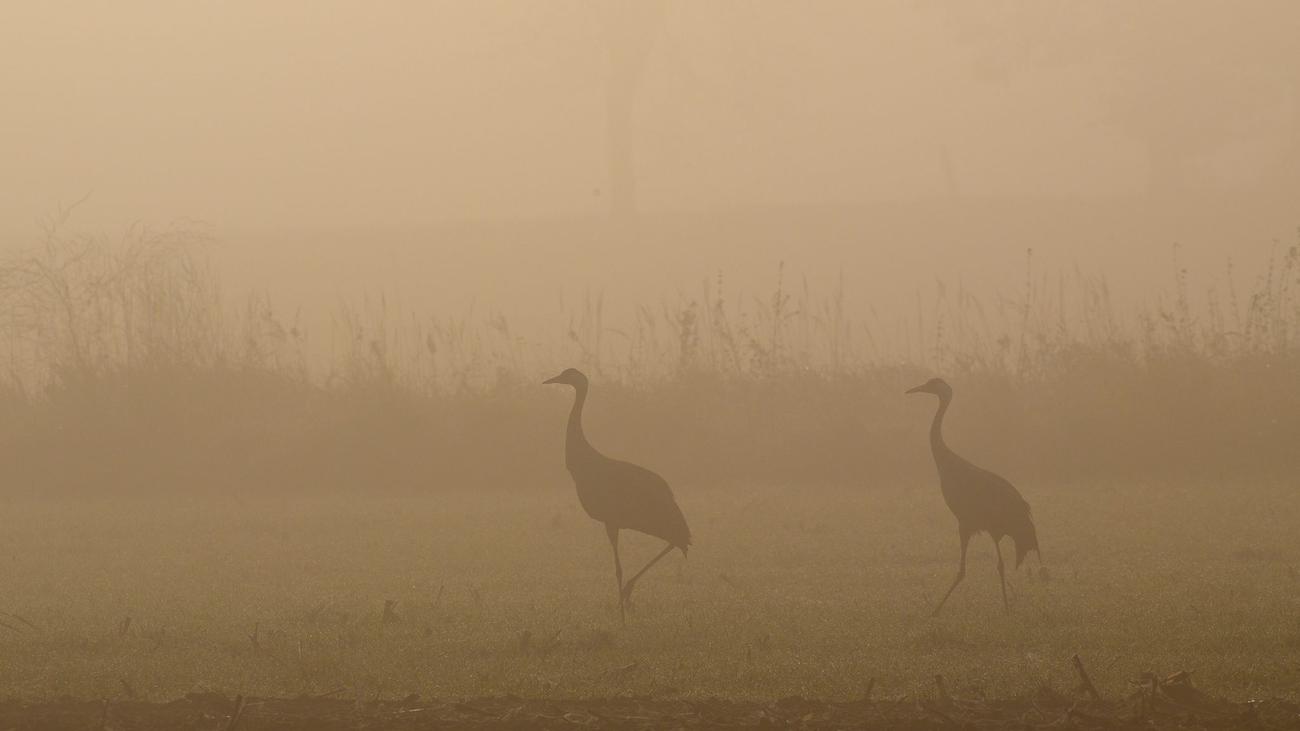
Cranes Defy Winter, Thriving in Central Germany
Introduction
Cranes, graceful birds often associated with spring, have surprised ornithologists in Saxony-Anhalt, Germany. Instead of embarking on their usual southerly migration, thousands of cranes have remained in the region throughout the winter, defying cold temperatures and abundant snowfall.
Unprecedented Winter Stay
"We hear the adage ‘The cranes are returning,’ but I’d say they never really left," remarked Martin Schulze, deputy chairman of the Naturschutzbund (Nabu) Saxony-Anhalt. Historically, the more than 1,000 breeding pairs of cranes in Saxony-Anhalt, along with approximately 150,000 birds from northern and eastern regions, have migrated to warmer climates such as France and Spain during the winter months. However, recent trends have witnessed a remarkable shift in their behavior.
Factors Contributing to the Stay
The decision by cranes to remain in Germany during winter can be attributed to several factors. Milder winters, combined with ample food resources, have encouraged the birds to stay put. According to estimates by the Landesarbeitsgemeinschaft Kranichschutz (State Arbeitsgemeinschaft Crane Protection), up to 4,000 cranes have overwintered in Saxony-Anhalt. Bundesweit (nationwide), experts estimate that approximately 20,000 birds have forgone their traditional southern migration.
Clustering in Favorable Locations
Determining whether all cranes currently observed in Saxony-Anhalt are native to the region remains challenging. Schulze explains that many birds congregate in areas offering favorable conditions. "It’s difficult to discern which cranes have remained throughout the winter and which have merely gathered in suitable locations."
Temperature Not Sole Determining Factor
Contrary to popular belief, cold temperatures alone do not pose a significant threat to cranes. Axel Schonert of the Landesarbeitsgemeinschaft Kranichschutz emphasizes that cranes are well-adapted to cold conditions. However, when the ground freezes or snow cover conceals their food sources, many cranes still opt to migrate further south or west.
Population Trends
In 2023, the Kranichschutzverband (Crane Protection Association) recorded over 1,000 breeding pairs in Saxony-Anhalt. "We anticipate that the number will not have declined in 2024," Schonert anticipates. The official figures for 2023 are scheduled for release in early March.
Success Story in Modern Conservation
Cranes have emerged as a major success story in modern conservation efforts. According to Nabu, their populations have steadily recovered over the past decades. Three decades ago, only a handful of breeding pairs existed in Saxony-Anhalt. By the early 20th century, cranes had nearly vanished from Germany. Through dedicated conservation measures, their numbers have rebounded remarkably, showcasing the positive impact of wildlife conservation initiatives.
